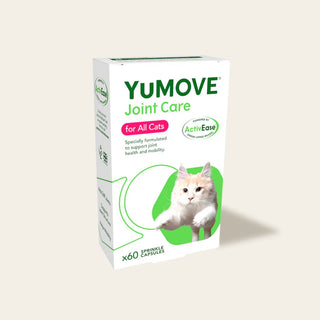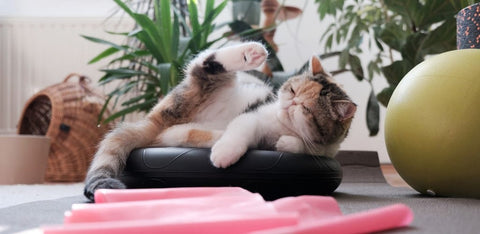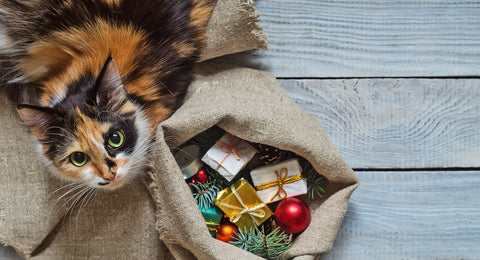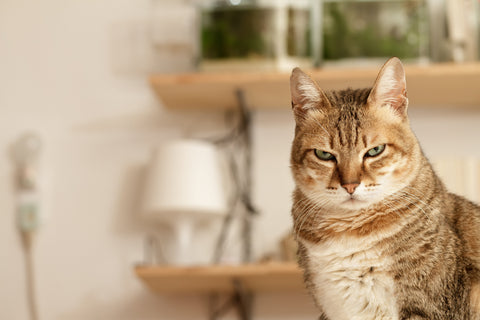
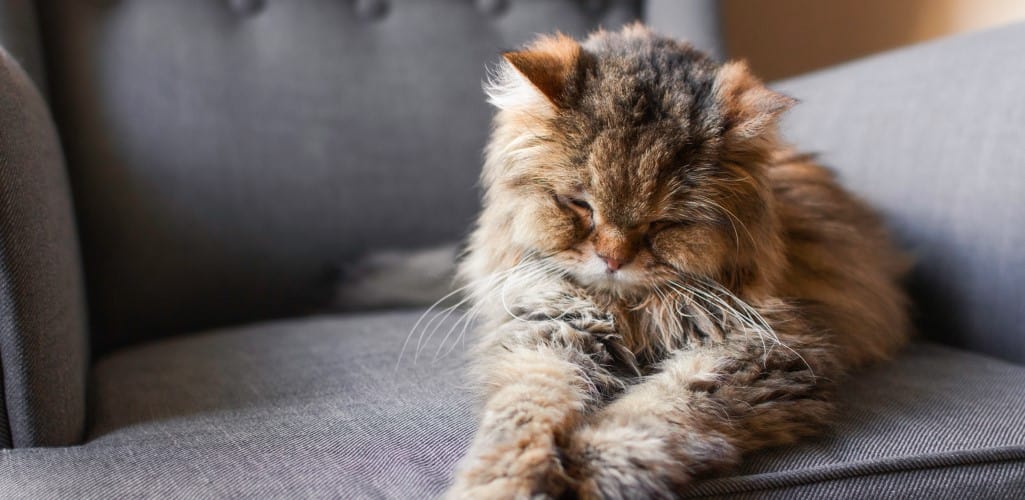
Skincare tips for older cats
What happens to your cat’s skin as they age? And how can you help your cat’s skin stay healthy? Could cat moisturiser be the answer or a cat skin supplement? We take a closer look.
Cat’s skin: out of sight
As your cat gets older, some of the changes they experience will be obvious to you. They might slow down, become less playful, and show the occasional sign of stiffness. They may want to sleep a little more and be less keen on going outside at night to experience exciting nocturnal adventures.
But how about their skin? It’s quite possible that you rarely think about the condition of your cat’s skin. For one thing, it’s usually covered with fur, unless your cat is a hairless breed such as a Sphynx, Donskoy or Peterbald.
For most cat lovers, the only time we are able to inspect our cat’s skin closely is when they’ve been shaved for an operation. Even then, we’re only likely to be able to see a tiny area, such as a small patch of skin on a front leg.

Your cat’s skin
So what’s going on under all that fur? What is a cat’s skin like and what is its function?
As with humans, the skin is the largest organ in your cat’s body. It’s there to protect your cat from the environment, to help regulate temperature and to enable your cat to feel touch, pressure, vibration, heat, cold and pain.
The structure of your cat’s skin is also strikingly similar to the structure of human skin: a top protective layer called the epidermis, a layer of connective tissue called the dermis, and a subcutaneous layer that attaches to the bone and muscle underneath.
On top of the skin, your cat has a hair coat that provides an extra layer of insulation. Typically, their winter coat will have longer, finer hairs that will help to trap and conserve heat, while their summer coat will be made up of shorter, thicker hairs that encourage air flow and help your cat to stay cool.
Changes in your older cat’s skin
As your cat ages, their skin will have reduced blood circulation. It’s likely to become thinner, dryer and more delicate, and therefore can be more easily damaged. If your cat has a run-in with the tomcat next door or is scratched by a rosebush, soft tissue injuries can take longer to heal.
Grooming and healthy skin

As your cat becomes older, they may also start to groom themselves less often. This could be because their joints have become stiffer and they find it harder to move or, in some cases, because they have become overweight and are physically unable to reach around their bodies in the way they used to.
Grooming is vital for the health of your cat’s skin. While it may seem that your cat is simply licking their fur, in fact they are helping to keep their skin in good condition too.
Cats’ tongues feel rough when they lick you because they’re covered in barbs called papillae. When cats groom themselves, the papillae on their tongues stimulate the sebaceous glands in their skin to produce sebum, or skin oil. Sebum, made up of fatty acids, helps to keep your cat’s skin soft, supple and hydrated. It also gives your cat’s coat a healthy-looking sheen and makes it waterproof.
When grooming tails off
If your older cat is no longer grooming themselves as frequently or as thoroughly as they used to, this could have an impact on the health of their skin. Your cat might end up with skin odour as well as matted fur.
So what can you do to help your senior cat maintain healthy skin and a glossy coat? We’d always recommend that you take your cat to the vet for a check-up first, to make sure there are no underlying problems.
Apart from that, grooming your cat can make a huge difference. It will also help you and your kitty to bond. By regularly brushing your cat, you can help to keep their fur tangle-free, improve circulation in their skin, and encourage their sebaceous glands to produce the sebum that will hydrate their skin.

And cat moisturiser?
As far as we know, there’s no such thing. If you’ve ever thought about herding cats, we imagine that trying to moisturise a cat would be equally difficult. Not to mention messy.
However, if you want to help your cat’s skin stay in top condition, you could try YuMOVE Skin and Coat Care for Moulting Cats. It’s in the form of a tasty oil that you add to your cat’s food. It contains extract of fresh Norwegian salmon as well as a mix of other ingredients that help nourish and replenish your cat’s skin.
Share your pictures
As always, we’d love to see pictures and videos of your cat on Facebook and Instagram. And do share your grooming tips, too.
